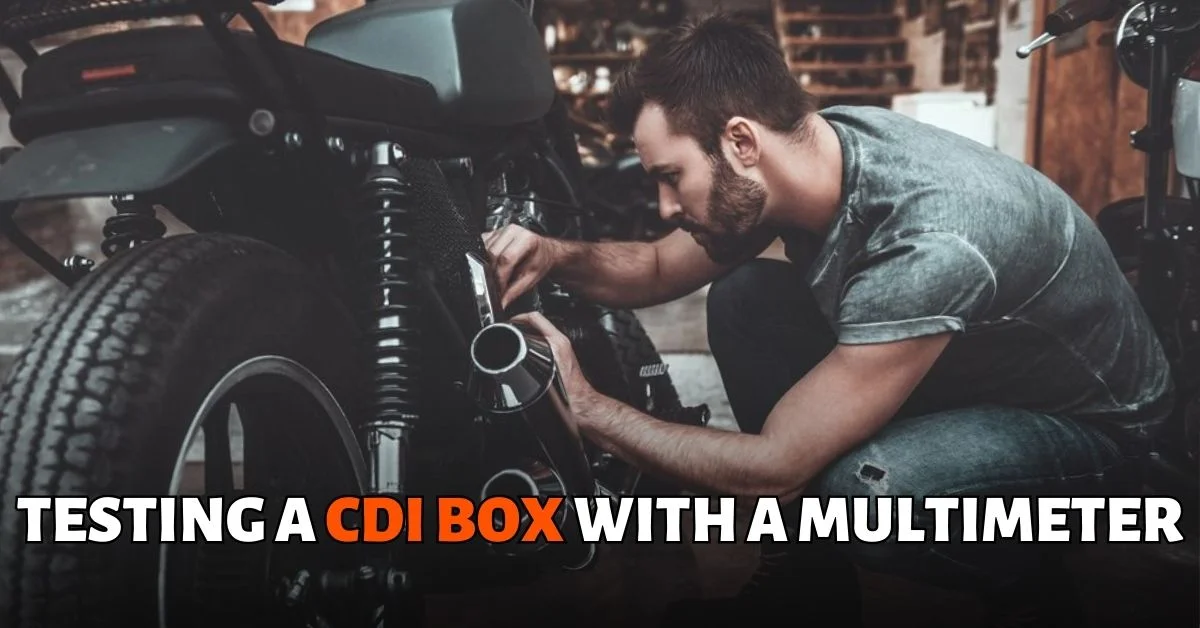In the world of automotive engineering, the CDI (Capacitive Discharge Ignition) box is a crucial component that plays a vital role in the ignition system of various vehicles such as snowmobiles, outboards, KTM motorcycles, Kawasaki motorcycles, and other vehicles. This electronic module acts as a switch, controlling the spark that ignites the fuel in the engine’s combustion chamber.
Without a properly functioning CDI box, a vehicle’s engine simply will not start.
Therefore, it is imperative to ensure that the CDI box is in good working condition. However, diagnosing a faulty CDI box can be a daunting task, which is why testing it with a multimeter is of the utmost importance.
Using a multimeter can help detect any potential issues with the CDI box, allowing for timely repairs or replacements to be made before the engine is put under stress. In this article, we will discuss how to test a CDI box with a multimeter and how it can ultimately lead to a safer and more efficient vehicle.
How Do You Know If Your CDI Box Is Bad?
The signs of a bad CDI box can be tricky to diagnose without proper testing. As such, it is essential to be aware of the symptoms that may indicate a problem with this vital component. Here are some of the most common symptoms that may point to issues with a CDI box:
Misfiring engine: A misfiring engine is one of the most prevalent signs of a bad CDI box. This occurs when the engine fires but fails to ignite fuel in the combustion chamber correctly. It can be caused by a faulty CDI box, a worn-out spark plug, or a malfunctioning ignition coil.
Dead cylinder: It occurs when one or more cylinders in the engine fail to fire, resulting in reduced engine performance. This can be caused by a malfunctioning ignition coil, a faulty diode, or a damaged spark plug.
Unusual tachometer behavior: If you notice unusual behavior in the tachometer, such as fluctuating or erratic readings, this could indicate a problem with the CDI box.
Ignition problems: A bad CDI box can cause problems with the ignition system, such as difficulty starting the engine, or no spark at all.
Engine stalling: A faulty CDI box can cause the engine to stall or cut out suddenly while driving, which can be dangerous and require immediate attention.
Backfiring engine: A backfiring engine is another indication of a bad CDI box. This occurs when the fuel in the combustion chamber ignites prematurely, resulting in a loud popping or banging sound.
It’s important to pinpoint the exact source of the problem before attempting to fix or replace any components. This is where a multimeter comes in handy. By using a multimeter, you can quickly and accurately test the CDI box’s components, identify the faulty parts, and take the necessary steps to fix or replace them.
Preparing To Test CDI Box
Before testing the CDI box, you need to prepare the necessary tools and take safety precautions to prevent any accidents or damage. Here are the tools required for testing a CDI box with a multimeter:
- CDI box
- Multimeter
Here are some safety precautions to consider:
- Wear gloves.
- Eye protection.
- Disconnect the battery
Quick Instructions For Testing CDI Box
Disconnect the CDI box from your motorcycle or ATV. Set your multimeter to the continuity setting, usually represented by a symbol that looks like a sound wave. Connect the positive and negative leads of the multimeter to the CDI box’s corresponding terminals. If you hear a continuous beeping sound, it indicates that CDI box is faulty.
Testing your CDI box might not be as simple as it seems, and there are a few things you need to know before you start.
You can do two types of testing: cold testing and hot testing.
Cold testing means testing the CDI box when it’s disconnected from the stator, while hot testing involves testing it while it’s still connected.
In the next section, I’ll explain how to do both types of testing step-by-step.
Steps To Test CDI Box With A Multimeter
Testing your CDI box can help diagnose any issues with your motorcycle’s ignition system. There are two methods to check your CDI box with a multimeter – a hot test and a cold test. Here’s a step-by-step guide for each method:
Method 1 – The Hot Test
If you prefer not to disconnect the CDI box from your motorcycle or ATV, you can perform a hot test to diagnose any issues. This test requires measuring the resistance between the stator end of the blue and white wire that connects it to the CDI box, using a multimeter set to 2k ohms resistance.
To conduct the hot test, follow these steps:
- Locate the stator end of the blue and white wire that connects to the CDI box.
- Set your multimeter to 2k ohms resistance.
- Measure the resistance between the blue wire and the white wire. The reading should be between 77 and 85 ohms.
- Next, measure the resistance between the white wire and ground. The reading should be between 360 and 490 ohms.
- If the resistance readings are within the specified ranges, your CDI box may be faulty.
- If the resistance readings are not within the specified ranges, your stator may be the problem, and it is advisable to seek the assistance of a professional mechanic.
If the readings fall within the specified ranges, then the CDI box is likely the cause of any issues.
Method 2 – The Cold Test
- To perform a cold test on your CDI box, first locate it under the seat of your motorcycle. Look for the blue and white wire that connects the stator and the black CDI box with lead and pin connectors.
- Disconnect the CDI box and wait for about 30 minutes to an hour before working on it. This allows the internal capacitor to discharge, and you can visually inspect the CDI box for any physical deformations.
- Set your multimeter to continuity mode and test the continuity between the ground point and other terminal points within the CDI box. If there is a problem, your multimeter will beep, indicating the exact component that has the issue. The problem is usually with the SCR, diode, or internal capacitor.
Conclusion
Testing a CDI box with a multimeter requires careful attention to detail and adherence to safety precautions. It is important to ensure that the multimeter is set correctly and that all connections are secure before beginning the test. Additionally, it is crucial to follow the manufacturer’s instructions for testing the specific CDI box in question.
If the results of the multimeter test indicate that there may be an issue with the CDI box, it may be necessary to replace it. However, before doing so, it is recommended to consult with a professional.
By following best practices for testing with a multimeter and seeking assistance when needed, individuals can confidently ensure safe and efficient operation of their machinery.



